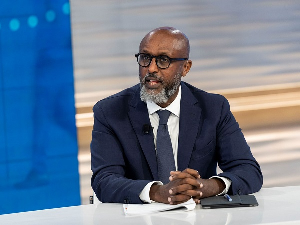The International Monetary Fund raised its economic growth forecast for sub-Saharan Africa next year to the highest since 2021, while warning that factors including social unrest create elevated uncertainty.
The Washington-based lender increased its growth expectations to 4.2% in 2025, slightly better than its outlook in April of 4%. The IMF in its Regional Economic Outlook report published Friday trimmed its outlook for this year to 3.6%, with nations that rely on natural resources seen growing at half the pace as those that don’t.
Sub-Saharan African nations including Kenya, Nigeria and Ghana have seen a wave of protests in recent months. Governments facing a severe and prolonged financing squeeze have faced tough decisions in raising taxes and cutting spending, leading to discontent among citizens battling a cost-of-living surge.
“People’s resilience is being tested,” said Abebe Selassie, director at the IMF’s Africa department. “I can hardly think of another part of the world whose resilience is being tested as my region.”
And while the IMF noted that economic imbalances have begun to narrow, challenges persist. Inflation is still in double digits in nearly one-third of the region, and rising debt-service burdens are diverting resources away from development spending, it said.
Significant Hardships
The short-term impacts of macroeconomic adjustments are causing significant hardships in many countries, the fund said in the report. The resulting social frustration and political pressures make it increasingly challenging to implement reforms.
The report mentioned the word “unrest” more than 20 times, saying there had been a regional resurgence of instability that had been on a downward trend until now. Inequality and exclusion provide fertile ground for unrest, it cautioned.
The fund also noted that perceptions of exclusion are greater in Africa than any other region, adding that large numbers of unemployed youth — regionally, more than one in four are out of work or school — are a “particularly potent source of exclusion.”
A separate note that the IMF published alongside the report warned that the clock is ticking to address Africa’s urgent need to create jobs. By 2030, sub-Saharan Africa will need to create up to 15 million new jobs annually, it said.
“It’s a daunting number,” said Selassie, who also pointed out the opportunities that aging workforces elsewhere create. “The future labor force of the global economy is going to be coming from Sub-Saharan Africa.”
Business News of Friday, 25 October 2024
Source: bloomberg.com













